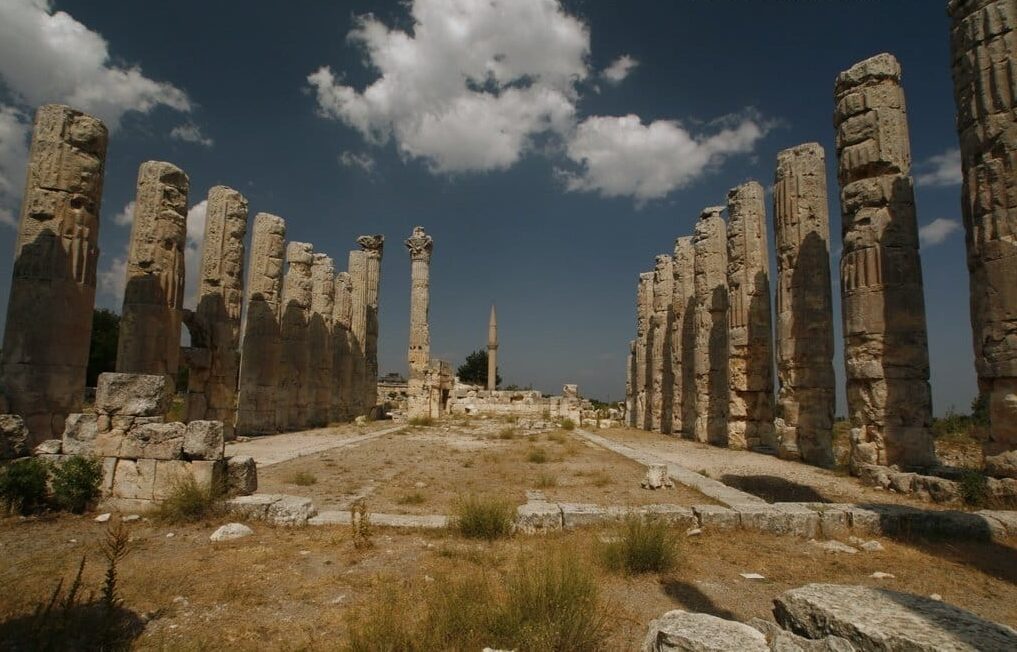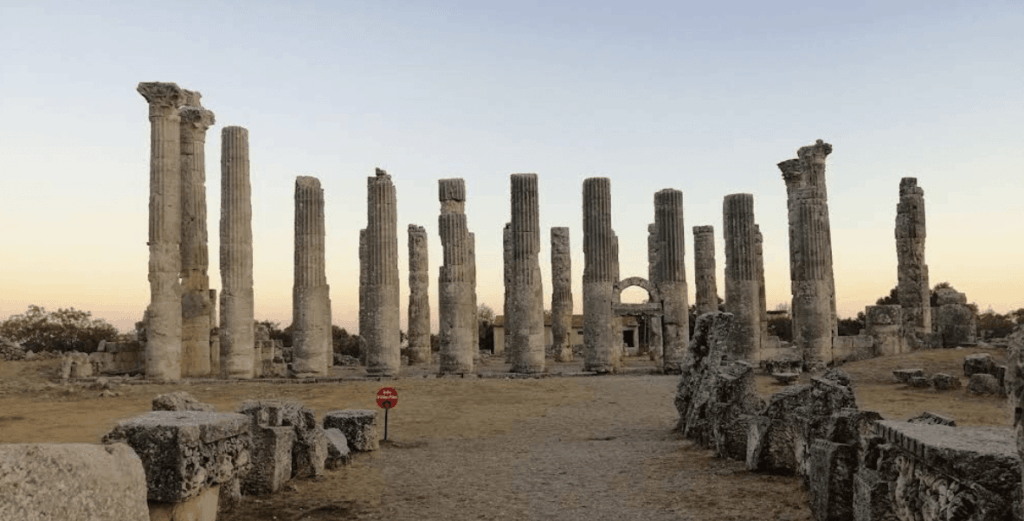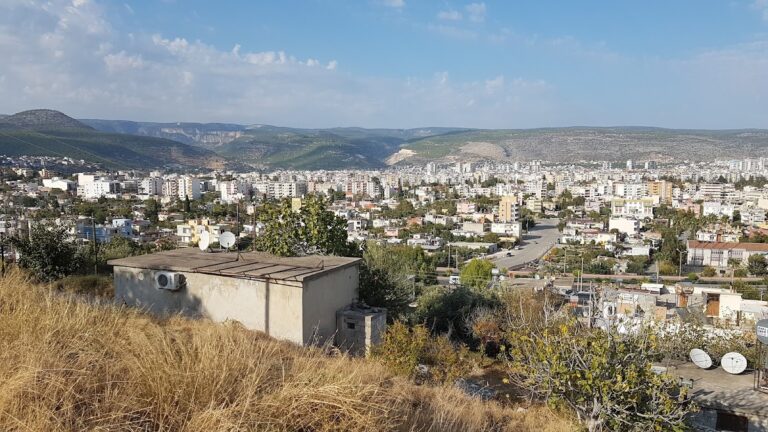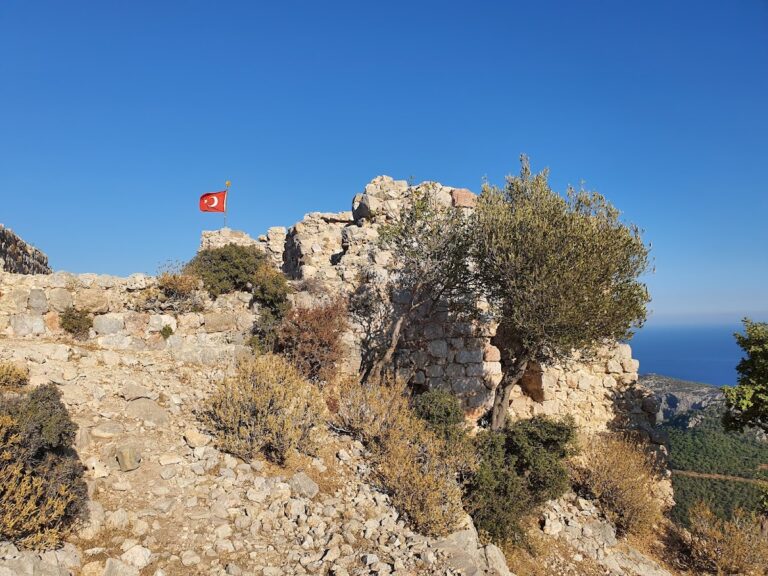Olba: An Ancient City in Modern Turkey with Rich Roman and Byzantine Heritage
Visitor Information
Google Rating: 4.5
Popularity: Low
Google Maps: View on Google Maps
Country: Turkey
Civilization: Byzantine, Greek, Roman
Remains: City
History
Olba is an ancient city situated within the municipality of Silifke, in modern-day Turkey. It was established by the people of the Roman era on a high plateau near the Taurus Mountains.
The earliest historical phase of Olba is linked to its association with Greek mythology. Legendary accounts identify Ajax, the half-brother of Teucer, as the city’s founder. Olba gained regional importance through a temple dedicated to Zeus Olbios, a local deity whose priest once held considerable influence over the surrounding area known as Cilicia Aspera, a rugged part of ancient Cilicia.
During the first century BCE, Olba came under the control of local rulers, including the tyrant Zenophanes and his daughter Aba. Their leadership reflects a period of semi-autonomous governance prior to the Roman establishment of the city as a colony. Eventually, Olba was incorporated into the Roman provincial system as part of Isauria, where it developed further under direct Roman influence.
The city underwent significant transformations under Roman and later Byzantine rule. In 199 AD, the Roman Emperor Septimius Severus commissioned the construction of an aqueduct to secure a reliable water supply. This infrastructural investment signals Olba’s continued importance within the empire. Repairs to the aqueduct were carried out during the Byzantine period, notably completed in 566 AD under Emperor Justinian I and his successor Justin II.
Religious developments marked Olba’s late antique period. The dominant pagan temple was converted into a Christian church, with the establishment of a cathedral inside its structure, reflecting the broader Christianization of the region. Olba became a recognized bishopric and maintained an active Christian community from the fourth through the seventh centuries. Ecclesiastical records mention the city’s religious status until the thirteenth century, indicating a prolonged spiritual presence.
Over the centuries, Olba experienced shifts in governance and religious authority, eventually ceasing to function as an inhabited city. The name Uzuncaburç, meaning “long tower” in Turkish, derives from a prominent five-story watchtower within Olba’s northern city walls. This tower was significant enough to be depicted on ancient coins, linking local identity to the city’s defensive features.
The ruins of Olba were rediscovered in March 1890 when Theodore Bent and his wife conducted archaeological surveys in the Cilicia Tracheia region, bringing renewed scholarly attention to the site. In more recent centuries, the bishopric of Olba was restored in a ceremonial form as a Latin titular see, with named incumbents serving from the eighteenth through twentieth centuries, although the title has remained vacant for several decades.
Remains
The ruins of Olba are spread across a high plateau and represent a blend of Roman and Byzantine architectural styles. The city’s layout includes public, religious, and defensive structures constructed predominantly from granite and other durable stone materials. Its urban plan reveals a combination of colonnaded streets, monumental gates, and open spaces characteristic of Roman city design.
One of the most notable features near Olba is the aqueduct built in the early third century AD under Emperor Septimius Severus. This double-tiered structure once spanned a valley about four kilometers east of the sacred precinct known as Diokaesareia (modern Uzuncaburç). The aqueduct extended roughly 150 meters in length and reached approximately 25 meters in height. Although much of the aqueduct is now in ruins, surviving segments stand to the west of the ancient agora, accompanied by several observation towers. These towers likely served for monitoring the water flow or overseeing maintenance work. The aqueduct channel transported water from the Limonlu (Lamas) River about eight kilometers to the northeast, near the village of Kızılgeçit.
Within the city itself, archaeological remains include a theater, suggesting venues for public performances or gatherings, and a nymphaeum, an ornate fountain structure serving both functional and decorative roles. Approaching the sacred area, visitors would have encountered a grand colonnaded street leading towards two important temples: one dedicated to Zeus Olbios and another honoring Tyche, the goddess of fortune. The monumental gate of the city, though partially destroyed, preserves five standing columns topped by massive architraves inscribed with dedicatory texts, demonstrating the civic pride of Olba’s inhabitants. A Roman city gate with three arches lies to the northwestern side, marking one of the main entrances.
The temple of Zeus Olbios, located about four kilometers from the city center, is a peripteral design, meaning it was surrounded by columns on all sides. It measures approximately 21 by 39 meters and rests on a raised platform called a stylobate. The temple featured a column arrangement of six by twelve, with each granite column displaying 24 vertical grooves known as flutes. The bases are of the Attic style, and the capitals—the decorated tops of columns—show intricate Corinthian designs made of three separate elements. This architectural style reveals Ptolemaic influence, linking Olba to broader Hellenistic artistic traditions. In addition to the classical features, remnants of a Doric entablature, the horizontal structure above the columns, survive, reflecting a mix of Greek architectural orders.
Following the city’s Christianization, the temple of Zeus was repurposed as a church, with the interior modified to include a cathedral. Within this transformed space is a baptistery containing a baptismal pool shaped like a cross, emphasizing the adoption of Christian rites. This adaptation demonstrates how pagan religious architecture was incorporated into new Christian worship practices.
Defensive structures at Olba include a five-story watchtower approximately 20 meters high, positioned atop the northern city wall. This tower has given the modern village its Turkish name, Uzuncaburç, or “long tower.” It was an important military vantage point and features on ancient local coins, signifying its prominence in the city’s identity.
Outside the city boundaries, several necropolises of various sizes have been identified, serving as burial grounds for the inhabitants. The use of granite, particularly in the construction of columns and architraves, along with inscribed dedications, forms a significant part of the city’s architectural heritage. Together, these remains provide a vivid picture of Olba’s complex history as a religious, administrative, and fortified urban center in antiquity.








